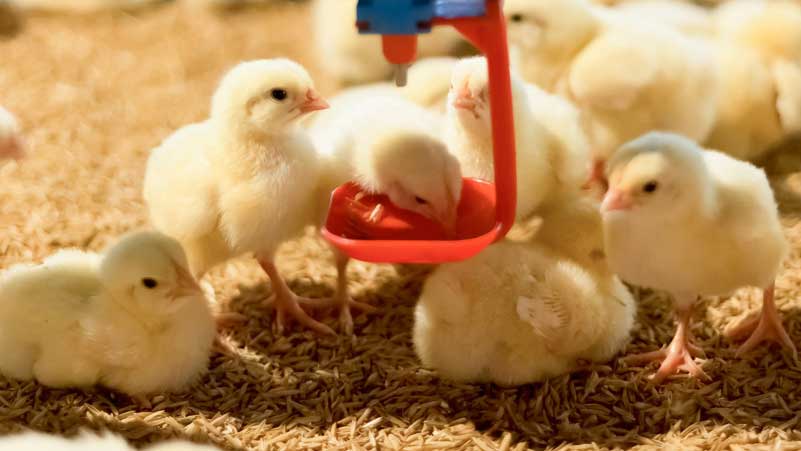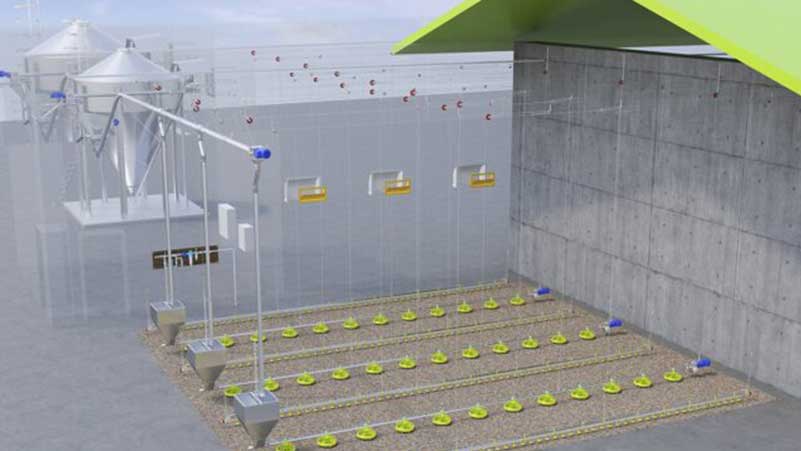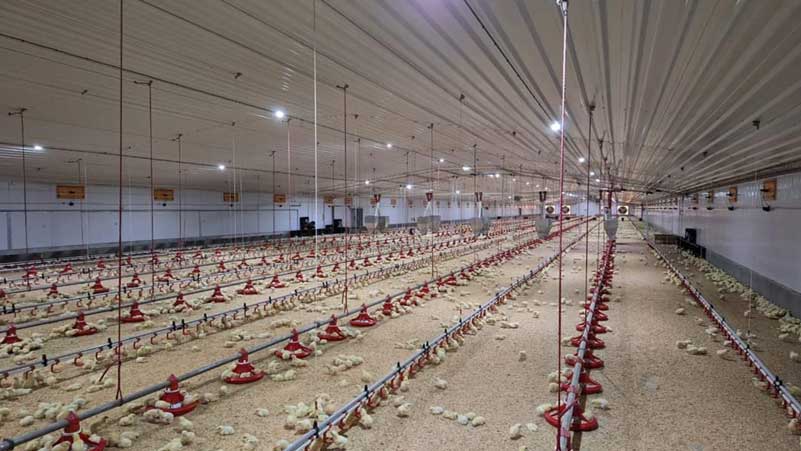In Zambia, agriculture is one of the pillars of the economy, and poultry farming, especially broiler farming, has always been an important part of the country’s agricultural sector. In order to improve the efficiency and quality of broiler chicken farming, Zambia’s agricultural field has gradually introduced advanced broiler chicken flat raising equipment, including the Broiler Feeding Pan System. This article will introduce in detail the advantages of using the Broiler Feeding Pan System in Zambia’s farming industry, the design drawings and farm planning of the fully automatic farm, and the characteristics of broiler feeding 10,000 chickens.

Advantages of Zambian broiler chicken farming
Zambia’s climatic conditions and the characteristics of broiler flat-raising equipment cooperate with each other, providing unique advantages for broiler farming. First of all, Zambia is located in southern Africa, with abundant sunshine resources and suitable temperature, which provides an ideal environment for the growth of broiler chickens. Sufficient sunlight aids photosynthesis and vitamin D synthesis in the chickens, promoting healthy growth.
Secondly, the use of broiler flat raising equipment can maximize the efficiency of farming. The Broiler Feeding Pan System is an advanced feeding system that automatically distributes the feed to ensure that the chickens can get the nutrients they need at any time. This system can effectively reduce the waste of feed and improve the economic benefits of feeding. In Zambia’s climate, the automated nature of the system is particularly suitable as it reduces manual input and increases productivity.
Furthermore, the broiler chicken farming industry in Zambia is driven by the demand from both domestic and international markets. With the increasing demand for high-quality poultry meat, Zambia’s farming industry has ushered in opportunities for development. The introduction of broiler flat raising equipment helps to improve product quality, meet market demand, and further promote the sustainable development of agriculture.

Fully automatic farm design drawings and farm planning for 10,000 chickens
In a fully automated farm with 10,000 broilers in Zambia, design drawings and farm planning are crucial. The size of the chicken house is determined according to the breeding needs and the number of chickens. Generally, the length of the chicken house can reach 90 meters, the width is 10 meters, and the height is 2.5 meters. This design accommodates a large number of chickens and ensures they have plenty of room to grow and move.
Farm planning needs to consider the following key factors:
Hygienic conditions: Cleanliness and sanitation inside the house are key to ensuring the health of the birds. Planning should include sanitation and sewerage systems to ensure sewage disposal and waste management.
Ventilation: The climate in Zambia can be very hot, so consideration must be given to the ventilation of the house to ensure that the birds maintain a suitable growing environment in the heat.
Water Sources and Drinking Systems: Adequate drinking water is critical to the health of broilers. Farm planning should ensure adequate water sources and design effective drinking water systems.
Safety: The design of the chicken house should also take into account safety issues such as fire prevention and anti-theft to protect the investment and the chickens.
Disease Management: Farm planning should also include an effective vaccination and disease management program to reduce the risk of disease in the birds.

The characteristics of Zambian broiler raising 10,000 chickens
Breeding 10,000 broilers is characterized by large-scale and high automation. This large-scale farming enables farms to meet market demand and improve economic efficiency. Compared with traditional small-scale farming, large-scale farming can usually better control costs, improve productivity and product quality.
The use of broiler flat raising equipment is also the key to this large-scale farming. Broiler Feeding Pan System reduces labor costs and improves farming efficiency through functions such as automatic feed distribution, quantitative feeding and automatic cleaning. The system also tracks and manages the diet of individual chickens, ensuring they are well-nourish and helping to improve meat quality.
Another feature is sustainability. The Zambian government and farmers are increasingly aware of the importance of agricultural sustainability, thus adopting environmentally friendly and sustainable practices such as waste management and energy use in farming. This helps reduce the pressure on natural resources and protects the environment, while increasing the sustainability of the farm.
In summary, Zambia’s broiler farming industry is developing towards a more efficient and sustainable direction with the support of advanced equipment such as the Broiler Feeding Pan System. Its unique climatic conditions provide a good environment for broiler farming, while the characteristics of scale and automation enable farmers to better meet market demand and improve economic benefits. This project not only helps to meet the domestic and international market demand for high-quality chicken meat, but also promotes the sustainable development of Zambia’s agricultural sector.

